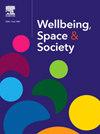Parenting ‘on the move’? Active school commuting is linked to parents’ well-being and children’s academic performance
IF 2.2
Q2 GEOGRAPHY
引用次数: 0
Abstract
Introduction
In recent years, growing attention has been given to the creation of ‘active environments’ across key aspects of everyday life. Two particularly relevant settings in this regard are school and transport. Therefore, examining school commuting through active or slow mobility modes may offer valuable insights into how these travel patterns may relate to specific indicators of parents’ well-being and their children’s academic performance.
Aim
This cross-sectional study compared a set of literature-supported variables related to parents’ health and well-being, and children’s academic performance –namely, body mass index, life satisfaction, travel satisfaction, commuting stress, and children’s average academic score– using data from Spanish school-commuting parents categorized by the type of transport they use: active (walking or cycling), private motorized, or public transport.
Method
For this purpose, the study utilized information provided by a sample of 542 Spanish parents or guardians (mean age = 37.7; 59 % women) who regularly take their children to and from school. They completed an electronic questionnaire assessing the five outcome variables mentioned above.
Results
There were found key differences across the three commuting groups, particularly regarding commuting stress, travel satisfaction, and subjective well-being. Significant differences were observed across the three commuting groups, particularly in commuting stress, travel satisfaction, life satisfaction, and body mass index, as well as children’s academic performance. Active commuting modes were consistently associated with more favorable outcomes across these indicators.
Conclusion
These findings underline the relevance of promoting active mobility as a potentially advantageous school commuting option for families. While the results do not imply causal effects, they highlight patterns that may warrant further investigation. Longitudinal and experimental studies are recommended to better understand the mechanisms underlying these associations and their practical implications for educational and transport policy.
父母“在移动中”?活跃的学校通勤与父母的幸福感和孩子的学习成绩有关
近年来,人们越来越关注在日常生活的关键方面创造“活跃环境”。在这方面两个特别相关的环境是学校和交通。因此,通过积极或缓慢的移动模式来研究学校通勤可能会提供有价值的见解,了解这些出行模式如何与父母的幸福感和孩子的学习成绩的具体指标相关。目的:本横断面研究比较了一组文献支持的变量,这些变量与父母的健康和幸福有关,以及儿童的学业成绩——即体重指数、生活满意度、旅行满意度、通勤压力和儿童的平均学业成绩——使用来自西班牙学校通勤父母的数据,这些数据按他们使用的交通工具类型分类:积极(步行或骑自行车)、私人机动或公共交通。为此,研究利用了542名西班牙父母或监护人(平均年龄= 37.7;(59%的女性)经常带孩子上下学。他们完成了一份评估上述五个结果变量的电子问卷。结果发现三个通勤组之间存在关键差异,特别是在通勤压力、旅行满意度和主观幸福感方面。三个通勤组之间存在显著差异,特别是在通勤压力、旅行满意度、生活满意度、体重指数以及孩子的学习成绩方面。在这些指标中,积极的通勤方式始终与更有利的结果相关。这些发现强调了促进积极的流动性作为家庭潜在的有利学校通勤选择的相关性。虽然结果并不意味着因果关系,但它们强调了可能值得进一步调查的模式。建议进行纵向研究和实验研究,以便更好地了解这些联系背后的机制及其对教育和运输政策的实际影响。
本文章由计算机程序翻译,如有差异,请以英文原文为准。
求助全文
约1分钟内获得全文
求助全文
来源期刊

Wellbeing Space and Society
Social Sciences-Social Sciences (miscellaneous)
CiteScore
2.70
自引率
0.00%
发文量
46
审稿时长
124 days
 求助内容:
求助内容: 应助结果提醒方式:
应助结果提醒方式:


